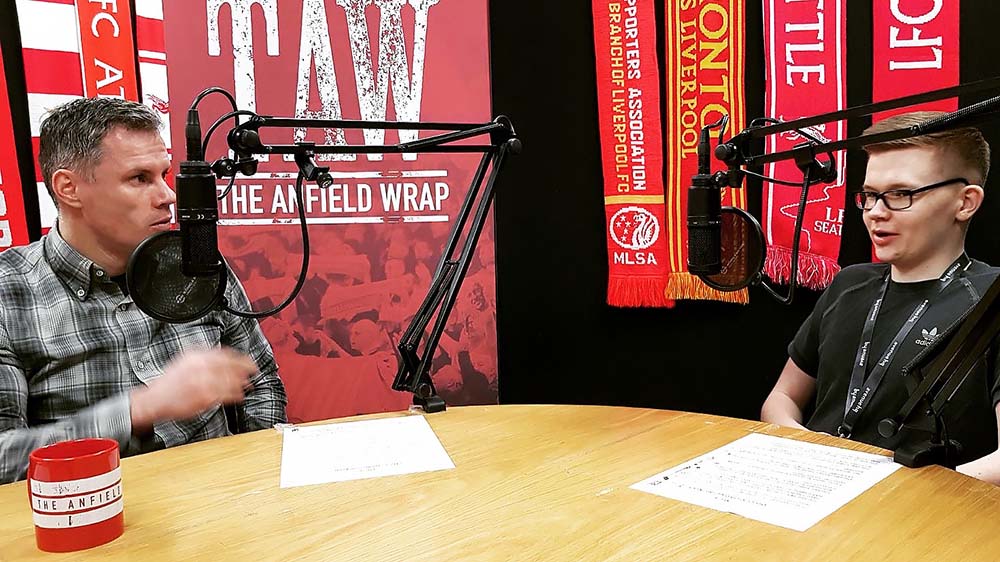Fan channels have soared in popularity as fans grow tired of ex-pros and pundits – is mainstream journalism struggling to adapt to their rivals?
Back in 2012, Robbie Lyle was no celebrity. A property surveyor, an Arsenal fan, once a chart-topping reggae artist under the name Crucial Robbie. But it was that year that Lyle would lay the foundations for creating one of the most-followed fan channels in the world.
The origins of AFTV – formerly Arsenal Fan TV – are almost incomparable to the current day. The channel’s earliest work featured a single, shaky camera getting post-match opinions in the shadow of the Emirates stadium. Today, however, more than 20 staff work in dedicated studios, a dream that many young, aspiring fans hope to live out. Speaking to The Athletic back in 2022, Lyle said turnover was set to hit £1.4 million that year.
It is a rapid transition that many channels still strive for, but what exactly has driven the rapid rise of fan channels in a little over 15 years? For Kieran Maguire, host of The Price of Football podcast, fan channels are a niche that represent a potentially lucrative investment opportunity.
“It employs a lot of people and it targets particular demographics which perhaps aren’t getting served elsewhere. If you’re successful at that, then that comes with the revenues that match,” said Maguire. “Big brands tend to do their due diligence and they don’t want to partner with something which is going to be here today, gone tomorrow.”
Many fan channels generate their revenue from a mix of advertisement, subscription services such as Patreon and some even have their own merchandise, but as Maguire has noticed, brand involvement often tends to be one particular type – betting companies.

“I think what we’re seeing is the betting companies in particular are quite keen to adopt new ways of engaging with what is predominantly young men with disposable income. Both sides absolutely win from it, because a betting company gets loads of people in on a special offer and the show hosts will say ‘Well, that keeps us running’.”
You don’t have to look far to see the scale of investment from betting companies – Sky Bet, Super 6 and Pari Match feature heavily. Sponsorship deals are particularly lucrative as the cost base for starting a fan channel has plummeted in recent years, especially when it comes to recording equipment.
What’s even more surprising is that many brands are fully aware that fan channels are risky investments, but one that many sponsors simply overlook, so long as the partnership delivers for them financially.
“They come with inherent risk because they tend to be formed on an ad hoc basis. You’re employing your mates, somebody you know, you’re not necessarily asking for a CV, not doing CRB checks. But for a younger demographic, I think that they speak the ‘language of the terraces,’ perhaps,” said Maguire.
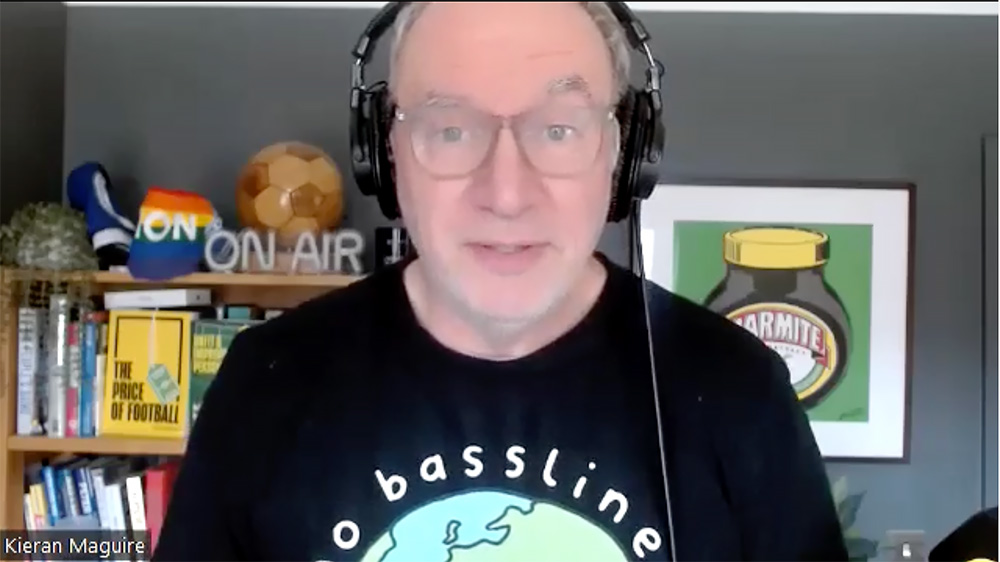
Recognising a target audience is one thing, but tapping in to their content preferences is another. Analysts like Maguire are worried that a tidal wave of investment will simply look for what’s generating the most views, even if content relies on controversy and negativity.
“Shouting, screaming and swearing are deemed to be both big and clever as far as the audience is concerned. You have to keep being controversial as well, if that’s your thing, in order to prevent somebody coming in and taking market share. Ultimately, there is a finite number of eyeballs for each individual club.”
That doesn’t sit well with fan channels whose priorities lie in community building and a more mature treatment of their audience. Ultimately, financial support for fan channels allows many to expand regardless of their approach and, arguably, enable some to become too large to ignore.
Maguire was invited onto ex-pro Joey Barton’s podcast in early 2024, but felt uncomfortable appearing. It was on the advice of his friends, however, that he did appear, arguing that both professionals and non-professionals couldn’t exist separate to each other forever.
“You can’t draw a line between what you do and what they do. You have got to use the same tactics to get your message out. I always say the view that engagement is not the same as endorsement.”
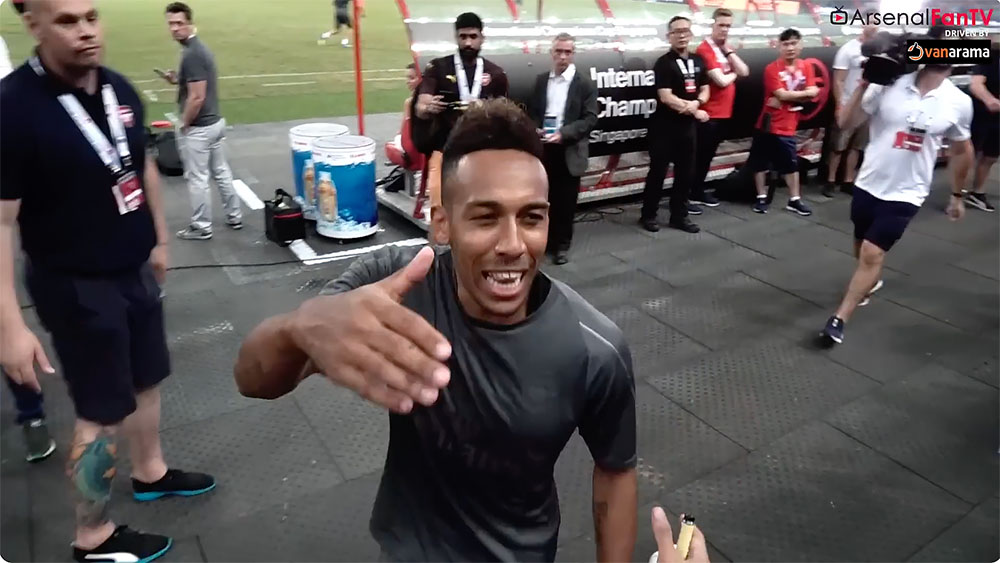
If financial investment has driven growth, it has also consolidated a key characteristic of fan channels – a lack of professionalism. What’s surprising is it has the real professionals fairly worried.
Sami Mokbel has been the Daily Mail’s Chief Football Reporter since 2012 and has already seen firsthand that traditional media is on the backfoot when it comes to the rise of the fan channel.
“In many ways, I think a lot of journalists will look at fan sites and say that they’re putting traditional media out of work. Punters are almost bypassing traditional outlets, such as ourselves, who are still breaking the news,” said Mokbel.
Mainstream journalism is having to deal with a competitor that is noticeably faster and one that isn’t slowed down by a strong adherence to professional standards. Many fan channels use direct messaging to gather information from relevant sources and can react incredibly quickly to breaking news.
That does, however, come at a cost.
“I’ll break a story or interview and within 30 seconds, those quotes, those stories are everywhere. They’re on social media, they’ve been listed many, many times, often they’re not even attributed to the outlet or to the journalist, they’re just shoved up on a website,” said Mokbel.
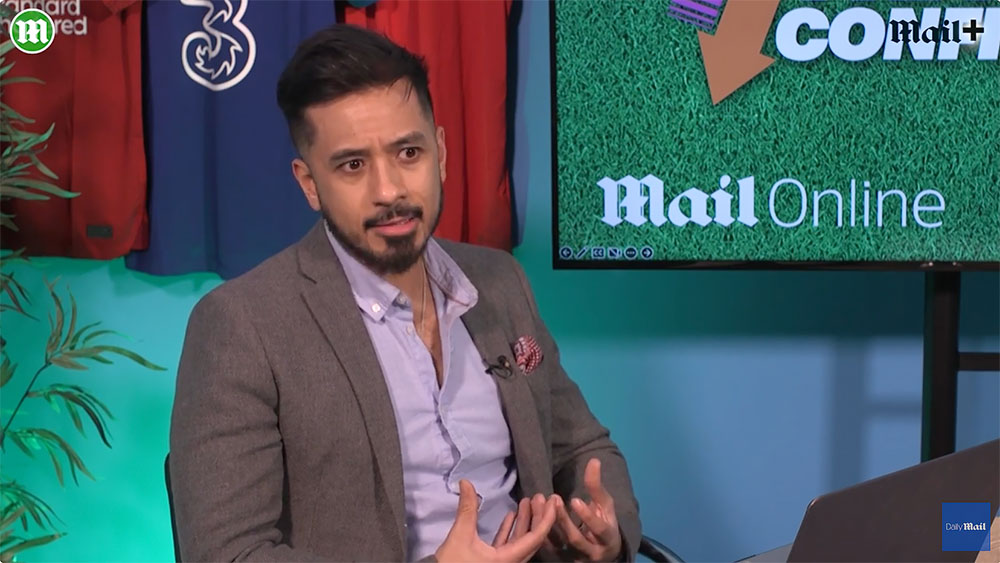
In November 2023, rumours were rife that Manchester United’s star striker Marcus Rashford was considering leaving the club. No professional journalist could verify whether the story was real, but as calls were made and questions were asked, one leading fan channel – The United Stand – had already set up a livestream to discuss the story. It would hit two million views on Twitter.
Rashford would directly reply, asking the channel to stop spreading ‘malicious rumours.’ His response would add 11 million views.
Cases like this are of particular concern to professional journalists. Fan channels who promote stories without any evidence or verification do not face any reputational damage, whereas any professional would be strongly criticised by their publication or regulators such as the Independent Press Standards Office.
“Self-regulation of the actual journalist and upholding their own reputations is vastly important in traditional mainstream media, because there’s so many options out there. You know there’s so many different ways where the readers can get their information that authenticity and accuracy is more important than it has ever been,” said Mokbel.
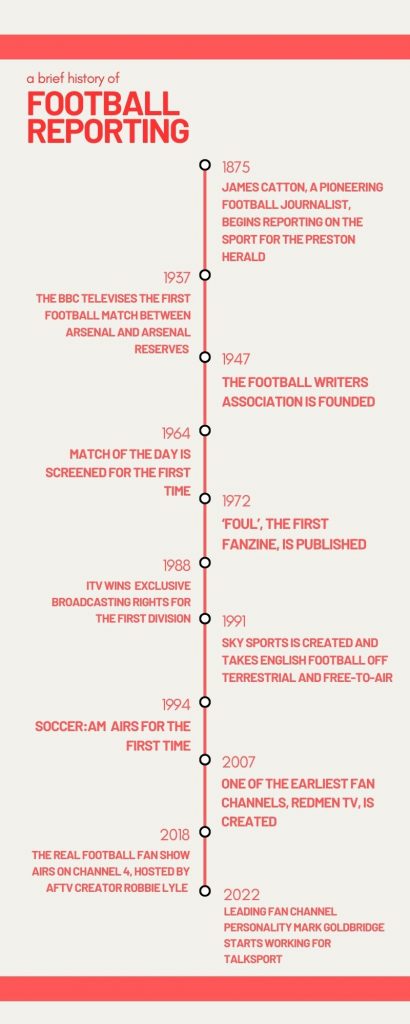
Mainstream journalism isn’t going to abandon such core values in the name of growing their viewing numbers. In fact, a strong application of professional standards is sustaining the ways in which fan channels thrive.
“I think they’re really respectful. I think they recognise that generally, we are still the kind of guys who have the ins, the contacts and the information. I still think that they value what we do,” said Mokbel.
Mokbel notes the work of Paul Joyce, who has been writing professionally since 2000, and has become a regular source for Liverpool-based fan channels as he regularly covers the club over the course of a season. Like other club-specific journalists, he unintentionally feeds into the media pipeline for fan channels.
Mokbel wants to better understand fan channels and, where possible, adapt their content for mainstream consumption. Audiences clearly respond to the passion that fan channels inject into their content and he believes a stronger focus on audio-visual content could help publications like the Mail diversify and enhance their professional content.

However, the sobering reality is that professional journalism is increasingly being governed by numbers, according to Mokbel. If the professionals want to adapt, they have to do so without compromising the values that guide their work.
“There’s a really fine line – where does clickbait start and where does emotive journalism end? I think we’re all trying to learn and see where that is at the moment, but those lines are kind of blurred.”
That includes a particularly tricky topic for fan channels going forward – regulation. What you might not expect to hear is that one of the industry’s leading figures admits the industry won’t grow without it.
Mark Goldbridge has amassed more than 3.5 million followers across his three main YouTube channels since he started posting short match reactions back in 2014. A passionate Manchester United fan and part-time presenter on TalkSport, he regularly divides opinion. Fans appreciate his emotive and abrasive style, while his detractors argue he wields undue influence.
Mark Goldbridge isn’t just a Manchester United follower and covers most Premier League teams, but his negative reactions to United losses often perform well (Credit: Mark Goldbridge That’s Entertainment!)
In May 2024, he released a YouTube video with fellow creator Laurence McKenna which provided a rare, open assessment of the fan channel industry. Both believe the industry has made huge strides forward, but Goldbridge goes on to say that a lack of regulation is a real problem.
“To create something where people who would have never got on TV to talk about football, who obviously have a voice that people want to listen to is an amazing thing,” said Goldbridge. “The negative is that it’s unregulated, it’s unfiltered and you can get opinions, words, avenues that you go down that are regrettable.”
The fan channel industry has already witnessed several regrettable incidents in the past. One of its most popular channels, The Kick Off, suffered a severe hit when its host, Brian Davis, made an allegedly Islamophobic remark during a livestream in 2022 that saw several co-hosts and sponsors GymShark and PokerStars leave the channel.
AFTV, formerly Arsenal Fan TV, is still remembered for its damaging controversies despite being an industry leader. In 2020, regular contributor Claude Callegari, who passed away the year after, made a racial slur towards Tottenham Hotspur winger Heung-Min Son on a livestream. When Harry’s, the shaving brand, announced they would no longer work with the channel, Callegari was removed indefinitely.
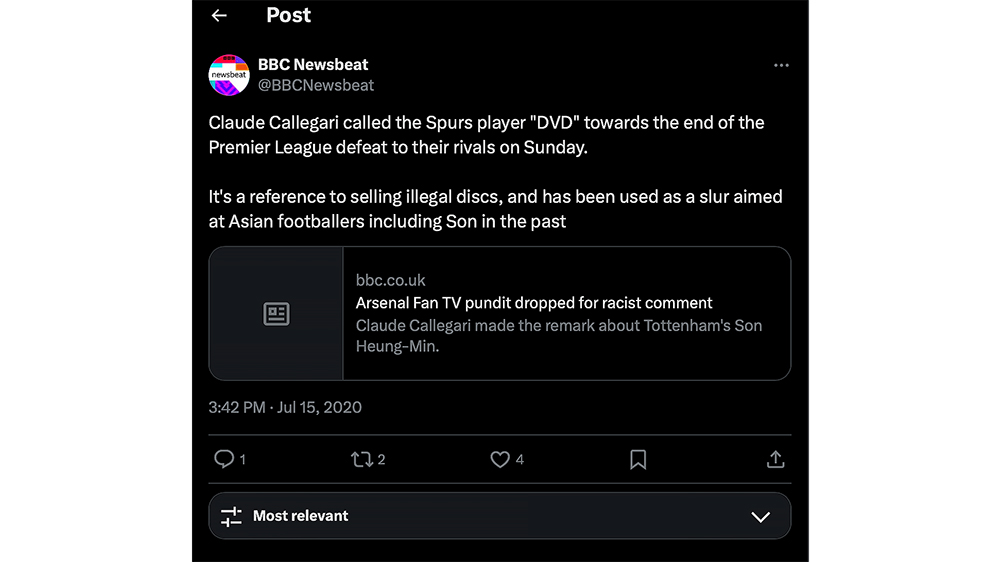
Fan favourite Liam Goodenough, known as DT, was removed from the channel when he was convicted in 2023 of kidnapping, assault occasioning actual bodily harm and stalking involving serious alarm or distress. AFTV introduced a strict code of conduct following his departure.
In his article covering AFTV’s ascent back in 2022, writer James McNicholas highlighted that fan channels now had to reckon with if and how they could handle their own media spotlight.
“Who they choose to put on camera, and the kind of ‘aftercare’ provided to ensure they can handle the dizzying experience, is likely to become a growing concern,” said McNicholas.
When detailing his perspective of the fan channel industry, Goldbridge stated his desire to see channels work together to take more responsibility for their work. That doesn’t just apply to staff and contributors, but also the toxic atmosphere in the industry that has allowed irate fans to thrive.
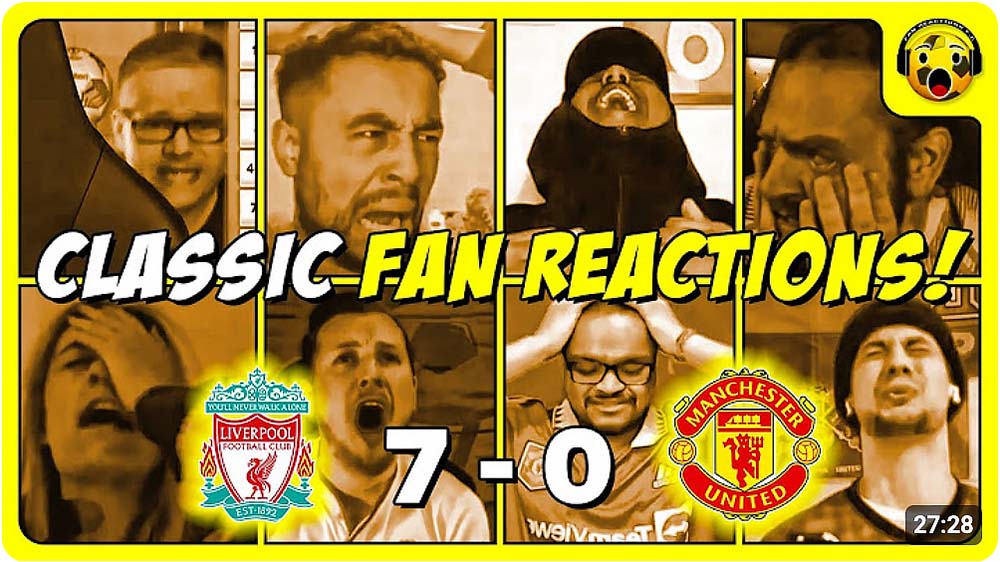
Goldbridge himself has received fierce criticism over a recent interview he conducted with Manchester United striker Rasmus Hojlund in March 2024. While the club and player fully agreed to the interview, it was reported that his teammates expressed concern over speaking to Goldbridge due to his past criticism of the team. That was enough for some fans to start sending death threats.
One said Goldbridge was a ‘dead man walking’ and the location of his United Stand channel studios was leaked online, putting staff at risk. Greater Manchester Police had spoken to Goldbridge and increased security at the site following these threats.
What exactly ‘regulation’ could mean for the industry remains very unclear. Channels can self-regulate, in the case of AFTV, but as Goldbridge has pointed out, there is also the growing problem of the industry ‘siloing’ fans – ensuring they consume content that encourages them to be angry and drive up engagement.
Goldbridge’s co-host, Laurence McKenna, sums up the current challenges in the fan channel industry rather neatly, with perhaps a tone of resignation that this is a problem that will take time to resolve. Perhaps it is even the current trade-off that the industry has yet to dispense with.
“In whatever YouTube channel you’re going to create, it’s going to be a monster. I guess what you would like is that you get to pick its features.”
